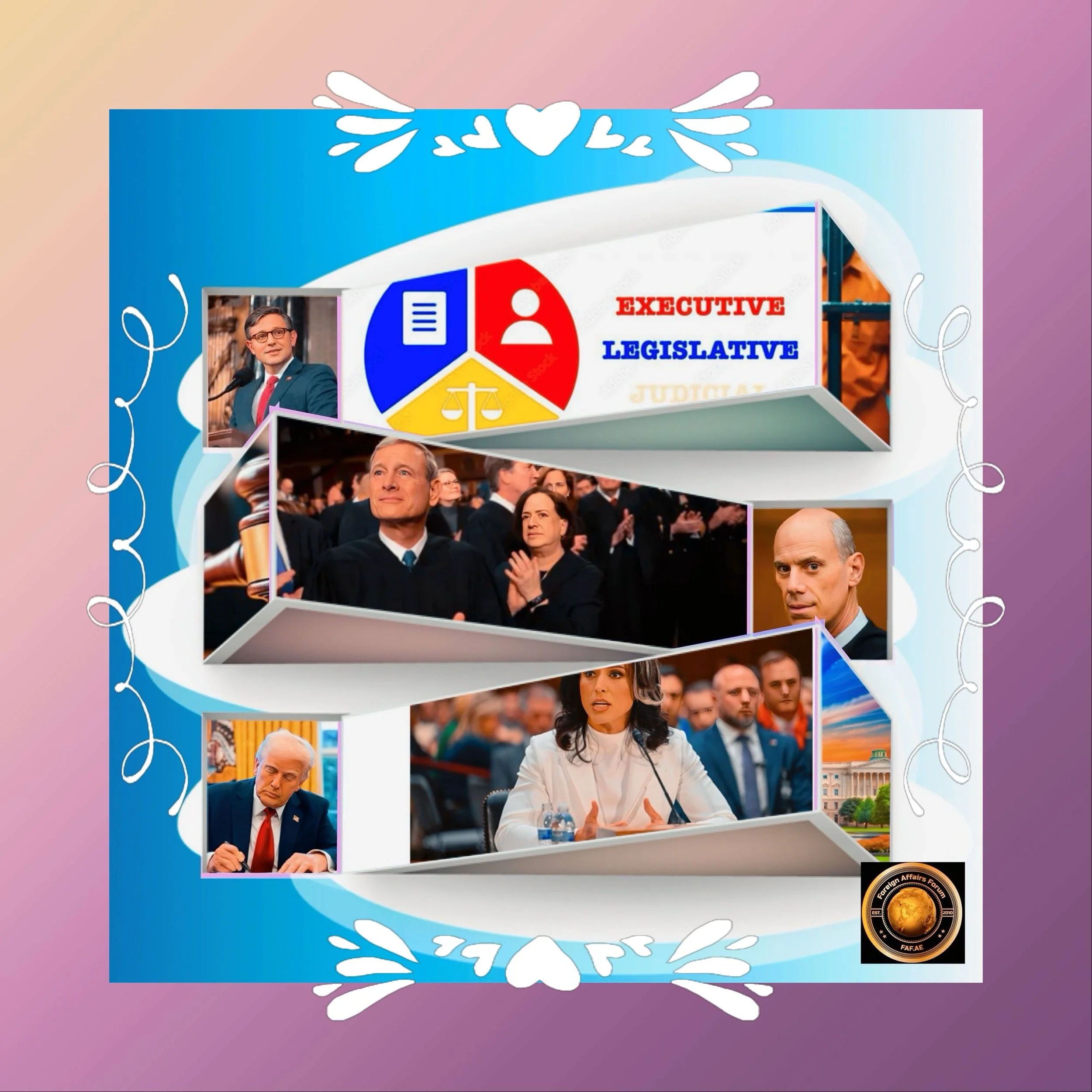Trump Escalates Battle with Federal Judiciary, Demands Supreme Court Limit Nationwide Injunctions
Introduction
President Donald Trump has intensified his conflict with the federal judiciary, demanding that Chief Justice John Roberts and the Supreme Court take action to curtail federal judges from issuing nationwide injunctions that have blocked numerous administration policies.
This marks a significant escalation in the ongoing tension between the executive and judicial branches, raising concerns about the separation of powers in the American constitutional system.
The Clash Over Nationwide Injunctions
On March 20, 2025, President Trump took to social media platform Truth Social to issue a direct challenge to the highest court in the land, declaring: “It is our goal to MAKE AMERICA GREAT AGAIN, and such a high aspiration can never be done if Radical and Highly Partisan Judges are allowed to stand in the way of JUSTICE.
STOP NATIONWIDE INJUNCTIONS NOW, BEFORE IT IS TOO LATE. If Justice Roberts and the United States Supreme Court do not fix this toxic and unprecedented situation IMMEDIATELY, our Country is in very serious trouble!”
The president’s frustration stems from the more than 100 lawsuits challenging his administration’s actions since he resumed office in January 2025.
Federal judges across the country have issued nationwide injunctions—court orders that block federal policies beyond the boundaries of their regional jurisdiction—halting several key Trump initiatives.
These blocked policies include efforts to curtail automatic birthright citizenship, deportation flights for alleged Venezuelan gang members, and the termination of thousands of federal employees.
Trump’s administration has specifically petitioned the Supreme Court to limit these judicial blocks, with the Justice Department filing appeals challenging the scope of nationwide injunctions issued by federal judges in Washington state, Massachusetts, and Maryland against the president’s birthright citizenship order.
The administration contends that these judges are overstepping their authority and impeding the president’s ability to implement his agenda.
The Boasberg Ruling and Roberts’ Rebuke
The conflict reached a critical point following U.S. District Judge James E. Boasberg’s ruling that blocked the administration’s use of the Alien Enemies Act—an 18th-century law—to deport Venezuelan migrants alleged to be gang members.
Trump responded by calling for Boasberg’s impeachment, describing him as an unelected “troublemaker and agitator” and a “Radical Left Lunatic” who “wants to assume the role of President”.
This call for impeachment prompted an extraordinary public response from Chief Justice John Roberts, who issued a rare statement defending judicial independence: “For more than two centuries, it has been established that impeachment is not an appropriate response to disagreement concerning a judicial decision.
The normal appellate review process exists for that purpose.” This direct rebuke from the nation’s top jurist underscored the gravity of the constitutional friction between the branches of government.
The Trump-Roberts Relationship
The tension between Trump and Roberts is not new. Their relationship has been complex from the outset of Trump’s political career.
In 2015, before assuming the presidency, Trump criticized Roberts as “disgraceful,” “disappointing,” and an “absolute disaster” for his support of the Affordable Care Act.
Despite this rocky beginning, Roberts administered the oath of office to Trump for both his terms.
During Trump’s first administration, Roberts authored rulings that both benefited the president—such as upholding his travel ban targeting Muslim-majority countries and granting him extensive immunity from criminal prosecution—and constrained him at critical junctures. Roberts also presided over both of Trump’s impeachment trials, which resulted in acquittals.
The current clash represents a new chapter in this complex relationship, with Trump directly challenging Roberts’ authority over the federal judiciary while simultaneously seeking the Supreme Court’s intervention in his favor.
Administration Strategy and Response
The White House has taken an aggressive stance in its battle with the judiciary. Press Secretary Karoline Leavitt criticized “activist” federal judges who she claimed are “attempting to dictate policy to the president of the United States and are clearly trying to hinder this administration’s agenda”.
The Justice Department has submitted multiple filings to the Supreme Court alleging that federal judges are misusing their constitutional authority.
A senior White House official revealed that despite Roberts’ disapproval of Trump’s impeachment demands, the administration is eager for cases to reach the Supreme Court, which has a 6-3 conservative majority including three justices appointed by Trump during his first term.
The official stated, “We interpret Roberts’ intervention as him indicating that he is aligned with the establishment and that calling for a judge’s impeachment contradicts the D.C. code of ethics, but ultimately he will support us.”
Congressional Republican Response
Republican lawmakers have proposed various measures to rein in the judiciary’s power to block Trump’s agenda.
These include
Legislation to limit the geographic reach of federal rulings, with Rep. Darrell Issa introducing a bill to prevent temporary restraining orders from being enacted nationwide
Potential cuts to court funding
Consideration of impeachment proceedings against judges
Proposals to eliminate entire district courts
House Speaker Mike Johnson stated that “desperate times call for desperate measures” and emphasized Congress’s authority over the federal courts: “We do have authority over the federal courts, as you know.
We can eliminate an entire district court. We have power of funding over the courts, and all these other things.”
The House Judiciary Committee, chaired by Rep. Jim Jordan, planned hearings on the issue, while Senator Josh Hawley proposed barring federal district judges from making decisions with national consequences.
Judicial Pushback and Constitutional Concerns
Several judges have criticized the administration’s legal arguments as inadequate or misleading.
U.S. District Judge William Alsup, who ordered six federal agencies to reinstate thousands of probationary employees fired in recent weeks, said the Justice Department tried to “obfuscate that the White House had improperly ordered agencies to fire workers en masse” and called the administration’s performance-based justification “a lie”.
Democrats and legal experts have warned that the attacks on the judiciary represent a threat to the constitutional separation of powers.
Senate Democratic Leader Chuck Schumer called the courts “the bulwark against Trump” and stated, “It is outrageous to even think of defunding the courts”.
Legal scholars have expressed concern that the administration might blatantly disregard court rulings, potentially leading to a constitutional crisis.
Some administration officials have made comments suggesting resistance to judicial authority, with White House border czar Tom Homan stating in an interview that the administration would persist in deporting alleged gang members, declaring, “I don’t care what the judges think.”
Conclusion
The unprecedented conflict between President Trump and the federal judiciary, particularly his direct challenge to Chief Justice Roberts to limit nationwide injunctions, represents a significant test of America’s constitutional system of checks and balances.
As the administration continues to pursue aggressive policies and courts continue to scrutinize their legality, the Supreme Court will likely be called upon to define the boundaries between executive authority and judicial review.
The outcome of this power struggle will have profound implications for the separation of powers, the independence of the judiciary, and the ability of future presidents to implement their agenda in the face of legal challenges.
As both sides dig in, the American constitutional system faces one of its most serious tests in recent memory.






